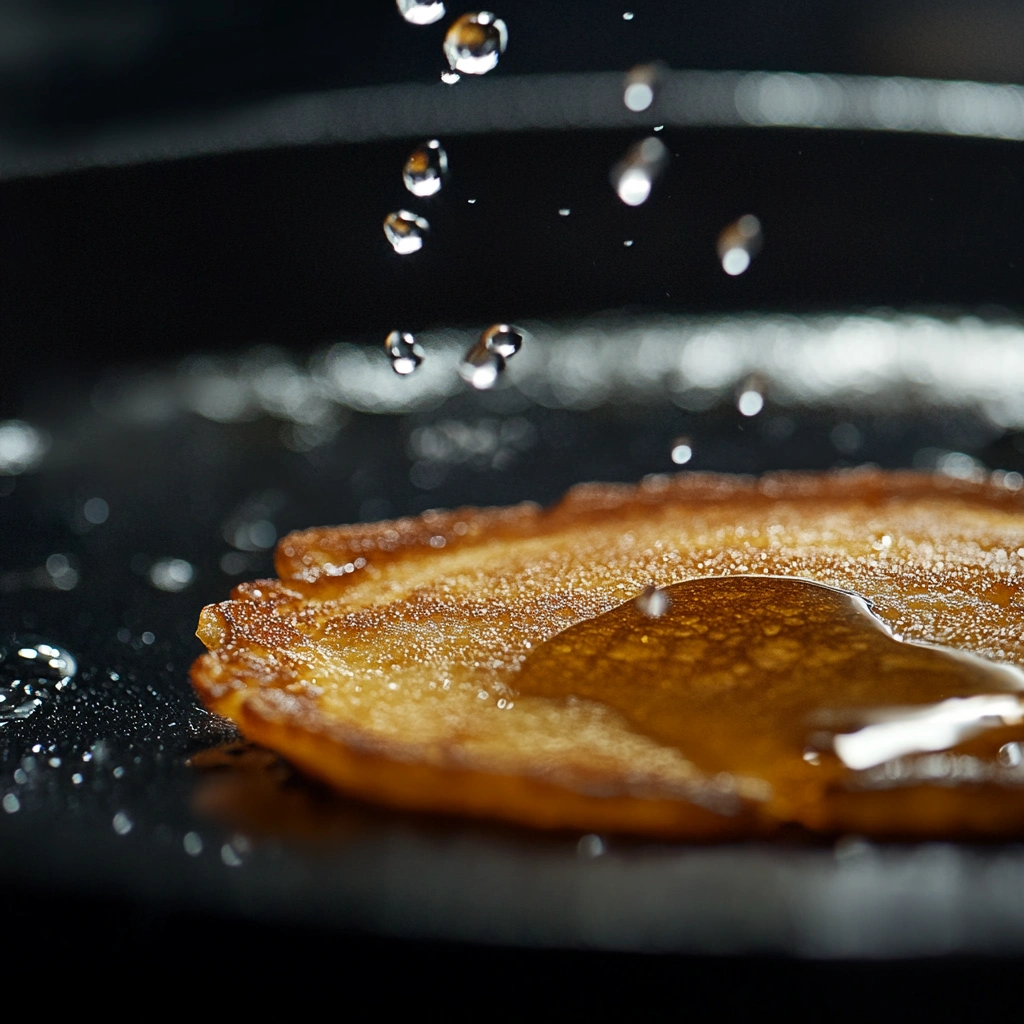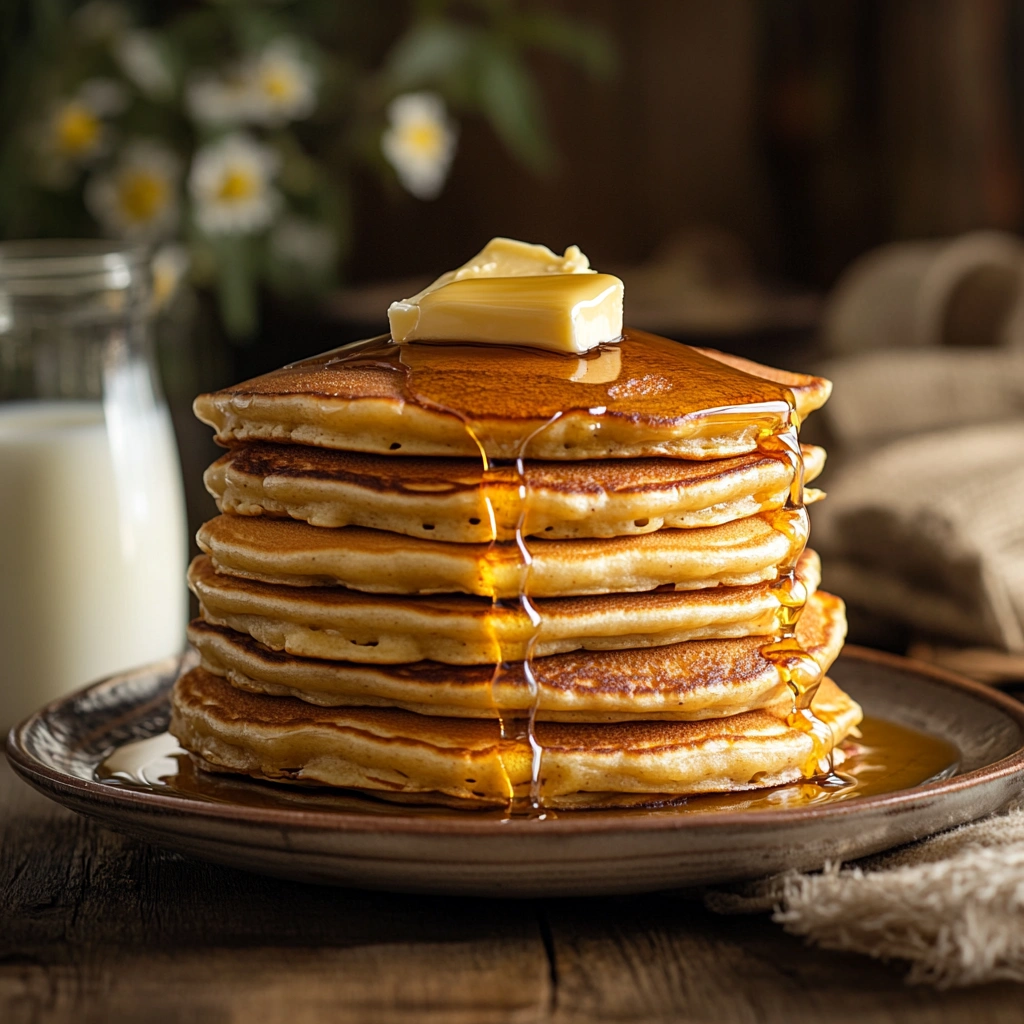Introduction
Pancakes! They’re the quintessential breakfast treat, but there’s a pressing question that has divided kitchens for ages—is pancake mix better with water or milk? Liquid ingredients may seem like a minor detail, but they’re a major player in determining the taste, texture, and overall success of your pancakes. Whether you’re whipping up breakfast for your family or perfecting your culinary craft, understanding how liquids impact your pancake mix can take your pancake game to the next level. Let’s dive in, starting with the basics.
Part 1: Is Pancake Mix Better with Water or Milk?
Every bite of a pancake tells a story, and a big part of that tale is written by the liquid you add. Some swear by water for its simplicity, while others champion milk for its creamy richness. The truth is, the best choice depends on what you’re aiming for in your pancakes. Are you chasing light, fluffy textures? Or do you crave a richer, melt-in-your-mouth experience?
Water, being neutral, lets the other ingredients shine. However, its lack of fat or protein means it won’t enhance the batter beyond hydrating it. Milk, on the other hand, contributes to the flavor, color, and softness of the final pancake, making it an all-around crowd-pleaser. Yet, if you’re watching your calories or dealing with dietary restrictions, water can be a practical choice.
The battle between water and milk in pancake mix boils down to personal preference and dietary needs. Whether you go for the plain or the plush, experimenting with both can help you find your ultimate pancake recipe.
Part 2: Understanding the Role of Liquids in Pancake Mix
Liquid ingredients in pancake batter play a more significant role than simply combining the dry elements. From hydration to texture, the type of liquid you choose shapes every aspect of your pancakes. But how exactly does it all work? Let’s break it down.
The Science Behind Pancake Batter Liquids
When you add a liquid—whether it’s water, milk, or a dairy-free alternative—to pancake mix, magic begins. At its core, the liquid serves two primary purposes: hydrating the dry ingredients and activating the leavening agents like baking powder or baking soda. This combination is essential for creating pancakes that rise and achieve that fluffy interior we all love.
Hydration and Gluten Development
The flour in your pancake mix contains proteins like glutenin and gliadin, which, when hydrated, form gluten. This network of gluten is responsible for giving pancakes their structure. Using milk can strengthen this network because of its added proteins, while water keeps it more delicate, resulting in airier, less chewy pancakes.
Activation of Leavening Agents
Leavening agents are activated by liquid, releasing carbon dioxide that causes the batter to rise. While water gets the job done, milk adds richness to the batter and helps produce a golden-brown hue due to the Maillard reaction—science-speak for the chemical process that makes food look and taste amazing when cooked.
Effects of Water in Pancake Mix
If you’re looking for a no-frills, straightforward pancake, water is your best friend. But simplicity has its trade-offs.

Texture and Consistency
Pancakes made with water tend to have a light, almost sponge-like texture. Because water lacks fats and proteins, the resulting pancakes are less tender compared to those made with milk. This can be ideal if you prefer thinner pancakes or are looking for a slightly crisp edge.
Flavor Profile
Water doesn’t contribute any flavor, which can be a double-edged sword. While this neutrality lets the other ingredients in the mix—like sugar or spices—take center stage, it can also leave your pancakes tasting a bit one-dimensional.
Nutritional Impact
For those counting calories or needing a low-fat option, water wins. It’s calorie-free and perfect for a lighter breakfast. If you’re using pre-made mixes that already have powdered milk or other flavor enhancers, water can suffice without sacrificing too much flavor.
Effects of Milk in Pancake Mix
For those who crave decadence, milk is the liquid of choice. It doesn’t just hydrate the mix—it elevates it.

Texture and Consistency
Milk creates a batter that’s creamier and thicker. Pancakes cooked with milk tend to be soft, fluffy, and melt-in-your-mouth tender. This is thanks to the fats and proteins in milk, which enhance the texture and provide a more cohesive structure to the pancake.
Flavor Enhancement
Milk brings a subtle sweetness and richness to your pancakes. This is especially noticeable when using whole milk, which contains higher fat content. Pancakes made with milk have a more satisfying, well-rounded flavor, which pairs beautifully with toppings like maple syrup or fresh fruits.
Nutritional Impact
Milk doesn’t just improve taste—it also boosts the nutritional profile of your pancakes. It adds essential nutrients like calcium, vitamin D, and protein, making it a more wholesome option. However, for those watching their fat intake, skim or low-fat milk can provide similar benefits without the extra calories.
When to Choose Water Over Milk—and Vice Versa
The choice between water and milk often depends on your personal preferences and dietary needs.
- Use water when:
- You’re aiming for a lighter, lower-calorie pancake.
- You’re using a mix that already contains powdered milk or flavoring.
- You want a thinner consistency or crispier edges.
- Use milk when:
- You want richer, fluffier pancakes with enhanced flavor.
- You’re not concerned about added calories.
- You want the golden-brown color and slight sweetness milk provides.
Exploring Other Liquid Options
Not a fan of sticking to tradition? There’s a world of alternative liquids to experiment with, each bringing its own flair to your pancake mix.
Plant-Based Milks
Almond, soy, oat, and coconut milk are excellent substitutes for traditional dairy. They offer unique flavors—almond milk adds a nutty undertone, while coconut milk creates a tropical twist. Most of these options are lower in calories than whole milk and cater to vegan or lactose-intolerant eaters.
Juices and Purees
For a creative spin, you can use fruit juices or purees as your liquid base. Orange juice, for instance, gives pancakes a citrusy zing, while apple puree adds natural sweetness and moisture.
Buttermilk
If you’re looking to create pancakes that are tangy and ultra-fluffy, buttermilk is unbeatable. Its acidity reacts with leavening agents in the mix to produce an extra rise.
Balancing Liquids in Pancake Batter
Regardless of which liquid you choose, achieving the perfect batter consistency is key. A too-thin batter will spread out too much, resulting in flat, dense pancakes. Conversely, a batter that’s too thick won’t cook evenly and may lead to a gummy interior. To strike the right balance:
- Start with the recommended liquid amount listed on the mix package.
- Gradually adjust by adding a tablespoon of liquid at a time if the batter feels too thick.
- Rest the batter for 5-10 minutes before cooking to allow the gluten to relax and the leavening agents to fully activate.
Experimenting with liquids in pancake batter opens up endless possibilities for customization. Whether you stick to the basics with water, indulge with milk, or get adventurous with alternatives, the choice is entirely yours. Up next, we’ll discuss practical tips for substitutions and dietary considerations!
Part 3: Practical Considerations for Choosing Between Water and Milk
Choosing between water and milk for your pancake mix isn’t just about flavor—it’s about what works best for your needs, preferences, and even lifestyle. In this section, we’ll explore how to substitute liquids effectively and cater to specific dietary requirements without compromising the joy of pancakes.
Substituting Water and Milk in Pancake Recipes
One of the most common dilemmas home cooks face is running out of a key ingredient. Fortunately, swapping milk for water—or vice versa—in pancake recipes is simple, but there are a few tips to keep in mind.
1:1 Substitution Guidelines
If your recipe calls for milk and you only have water, substitute it at a 1:1 ratio. However, be aware that this may slightly alter the texture and taste of the pancakes. To counteract this, consider adding a tablespoon of butter or a teaspoon of sugar to replicate the richness and sweetness milk would provide.
On the other hand, replacing water with milk is usually a seamless swap. This can enhance the pancakes without requiring any additional adjustments.
Adjusting Batter Consistency
When substituting, watch the batter consistency carefully. Milk, with its higher viscosity, often produces a slightly thicker batter. If your batter looks too runny after using water, reduce the liquid by a small amount, or add a spoonful of flour to maintain balance.
Dietary Preferences and Restrictions
For many, dietary considerations play a significant role in determining the liquid for their pancakes. Thankfully, there’s a range of options that cater to specific needs.
Vegan and Dairy-Free Choices
For a dairy-free twist, plant-based milks like almond, soy, and oat milk are fantastic alternatives. Each brings a distinct flavor and texture: almond milk imparts a light, nutty taste, while oat milk adds creaminess similar to regular milk. When using these substitutes, keep the 1:1 ratio but note that some plant-based milks may result in slightly denser pancakes.
Low-Calorie and Low-Fat Alternatives
If calorie control is a priority, water is the simplest choice. That said, low-fat milk or unsweetened almond milk can also keep the calories in check while adding more flavor and nutrients than water. Coconut water is another unique option that adds a touch of natural sweetness without overwhelming the taste.
Key Tips for Making the Right Choice
Consider the Pancake Mix Type
If your pancake mix already includes powdered milk or similar ingredients, water is often sufficient. These pre-fortified mixes are designed to work without fresh dairy, allowing you to save milk for other recipes.
Factor in Desired Texture and Taste
For lighter, less complex pancakes, water does the trick. However, if you’re after fluffy, rich results, milk (or a creamy alternative) is the way to go.
Experiment with Add-Ins
Regardless of your liquid choice, don’t be afraid to experiment with add-ins to enhance flavor. A splash of vanilla extract, a pinch of cinnamon, or a dollop of yogurt can elevate your pancakes from good to unforgettable.
Whether you’re experimenting out of necessity or curiosity, these practical considerations ensure you get the best out of your pancake mix—no matter the liquid you choose. Up next, we’ll dive into expert tips to perfect your pancake-making skills!
Part 4: Expert Tips for Perfect Pancakes
Making pancakes that are restaurant-worthy involves more than just choosing between water or milk—it’s about nailing the small details that elevate your breakfast game. Here’s how to make every pancake flip count.
Enhancing Pancake Flavor and Texture
Even with the perfect liquid, there are plenty of ways to take your pancakes up a notch.
Adding Flavor Enhancers
Infuse your batter with a splash of vanilla extract or a pinch of cinnamon to add warmth and depth to the flavor. For a tangy twist, try a teaspoon of lemon zest. If you’ve used water as your liquid, these additions can compensate for the neutral taste.
Incorporating Mix-Ins
To give your pancakes personality, fold in ingredients like fresh blueberries, chocolate chips, or chopped nuts. Mix-ins add texture and bursts of flavor, creating pancakes that feel special and unique. Just be sure not to overload the batter, as this can affect cooking time and consistency.
Cooking Techniques for Optimal Results
How you cook pancakes can be just as important as what’s in the batter.
Proper Mixing Methods
Overmixing is the pancake rookie mistake. Stir your ingredients just until combined, leaving small lumps in the batter. Overmixing develops too much gluten, resulting in tough, rubbery pancakes—nobody wants that!
Ideal Cooking Temperatures
Set your skillet or griddle to medium heat. Too hot, and your pancakes will burn before the center cooks through. A light sizzle when the batter hits the pan is a good sign. Grease lightly with butter or oil to prevent sticking and to ensure that golden-brown perfection.
With these expert tips, you’re ready to whip up pancakes that deliver both flavor and finesse. From batter to skillet, every step matters, so enjoy the process and savor the results!
FAQs: Is Pancake Mix Better with Water or Milk?
To address common queries surrounding the use of water or milk in pancake mix, here’s a quick FAQ section to provide clarity and helpful insights.
Can I use almond milk instead of regular milk in pancake mix?
Yes, almond milk works wonderfully as a substitute for regular milk in pancake mix. It has a light, nutty flavor that complements the batter well. Use it in the same 1:1 ratio as regular milk, but be aware that it might produce slightly less rich pancakes due to its lower fat content.
What happens if I use water instead of milk in pancake mix?
Using water instead of milk will result in pancakes that are lighter in texture and less rich in flavor. Water doesn’t add the fats and proteins found in milk, which means the pancakes might be less tender and slightly less golden. However, this option is great for cutting calories or when milk isn’t available.
How can I make my pancakes fluffier?
Fluffy pancakes rely on a combination of factors. Use milk (or buttermilk) for added richness, avoid overmixing the batter, and let the batter rest for 5-10 minutes before cooking. This rest period allows the gluten to relax and the leavening agents to fully activate, ensuring a light and airy texture.
Is it possible to make pancakes without any liquid?
No, a liquid is essential for creating pancake batter. It hydrates the dry ingredients, activates the leavening agents, and binds the components together. Without a liquid, the mix would remain dry and unworkable.
Are there other dairy-free options for pancake mix besides water?
Absolutely! Aside from almond milk, options like soy milk, oat milk, coconut milk, or even cashew milk can be used. Each one brings its own unique flavor and consistency, allowing you to customize your pancakes to your liking.
Does milk really make pancakes taste better?
For many, yes! Milk adds richness, sweetness, and a creamier texture that water alone can’t provide. It also enhances the golden-brown color of pancakes through the Maillard reaction. However, if simplicity or dietary preferences matter more to you, water can still produce delicious results.
By answering these frequently asked questions, you’re now equipped with even more knowledge to make an informed choice when preparing your next batch of pancakes. Let’s conclude with some final thoughts!
Conclusion: Making the Right Choice for Your Pancakes
Choosing water or milk for your pancake mix ultimately boils down to personal preference, dietary needs, and the desired flavor or texture. Water provides simplicity, while milk offers indulgence. The best part? You can always experiment to find what works best for you. Happy pancake-making!

